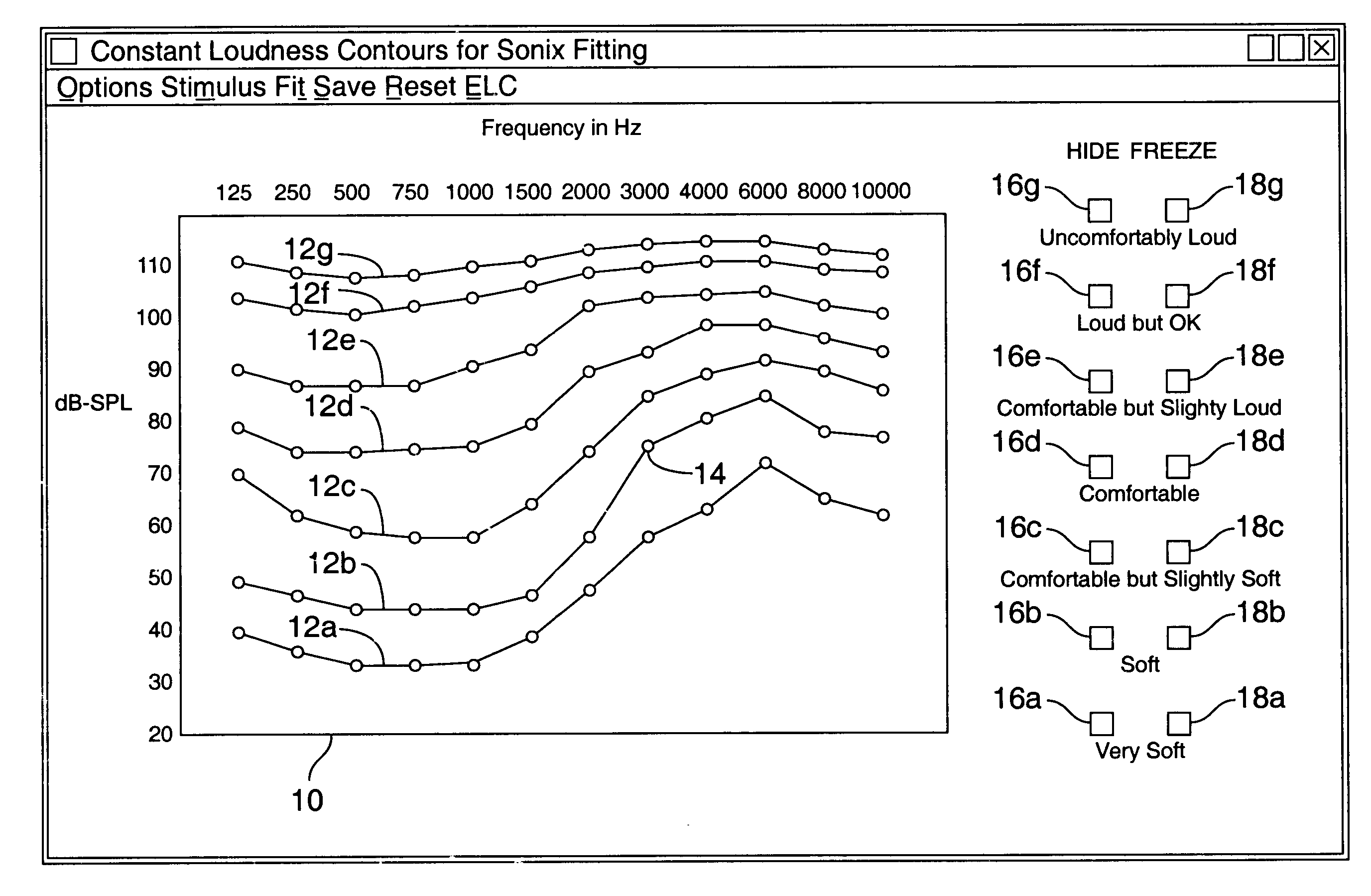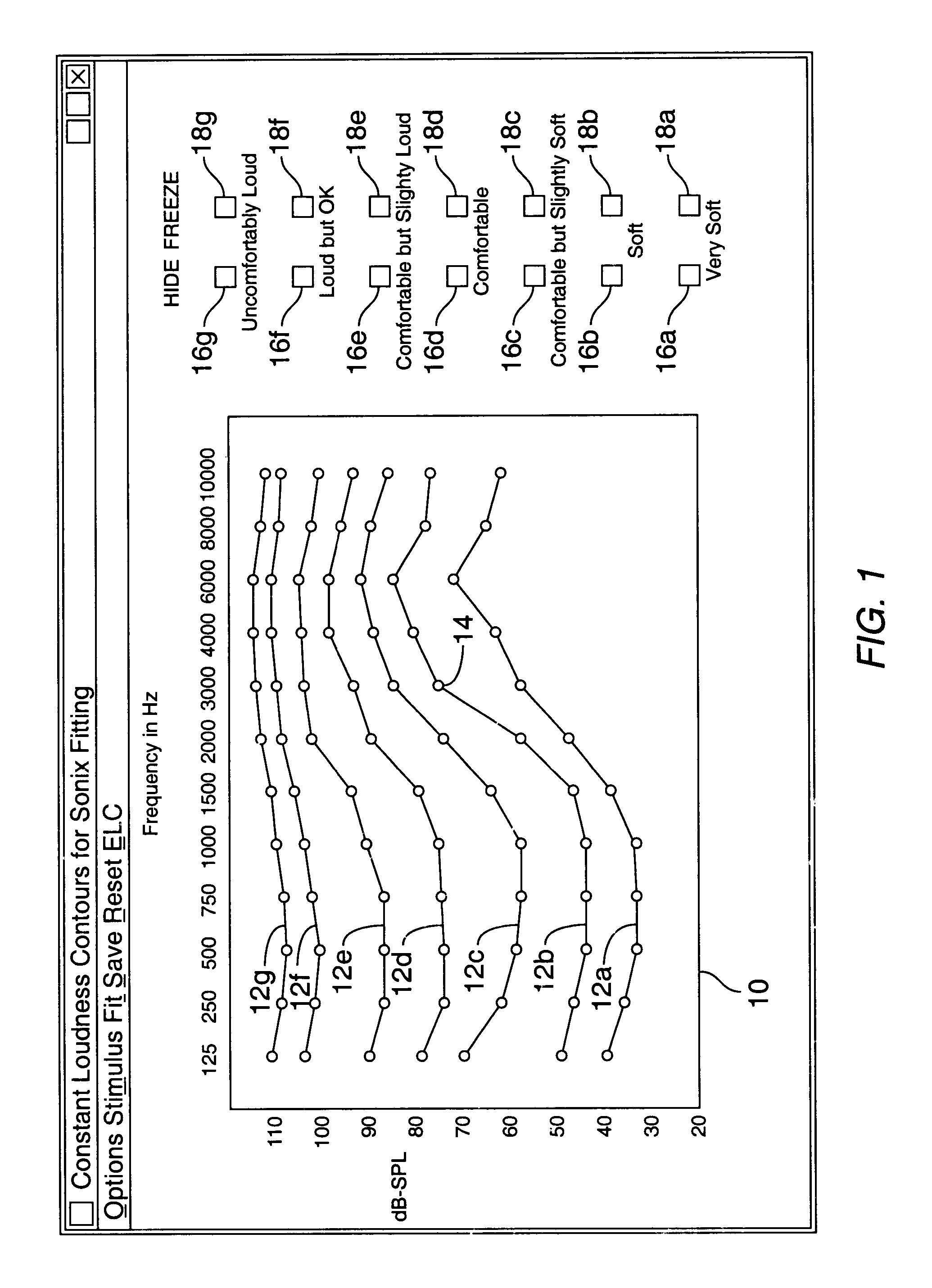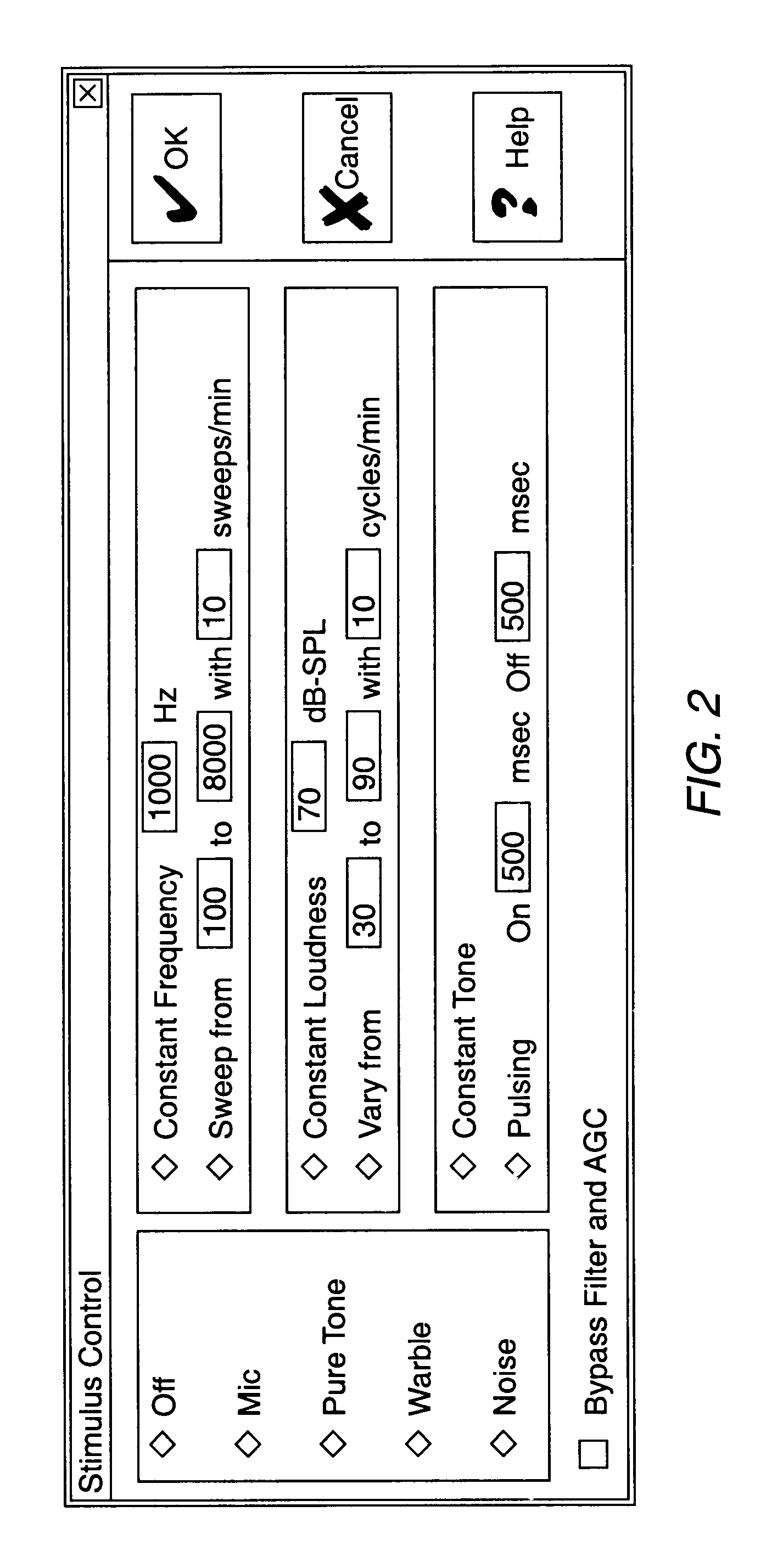Hearing aid fitting system
a technology of hearing aids and fittings, applied in the field of hearing aid fitting systems, can solve the problems of inability to accurately assess, lack of facility for comparing, and difficulty in calibrating the output of the hearing aid device to be worn by the individual to match the output of the headphones
- Summary
- Abstract
- Description
- Claims
- Application Information
AI Technical Summary
Problems solved by technology
Method used
Image
Examples
Embodiment Construction
Those of ordinary skill in the art will realize that the following description of the present invention is illustrative only and not in any way limiting. Other embodiments of the invention will readily suggest themselves to such skilled persons.
In a hearing aid fitting system according to the present invention, an assessment of the hearing loss of an individual across a broad dynamic range in multiple frequency bands to ensure a proper fit of a hearing aid to the individual is made very simply and accurately. In the present invention, the tones presented to the individual in the hearing loss assessment are generated by the hearing aid. Accordingly, unlike prior art fitting systems, the tones used in hearing assessment match the output of the hearing aid, and the in-the-ear acoustics are the same for both the apparatus used in assessing the hearing loss and the hearing aid. The tones are generated in response to the manipulation of a graphical user interface by the individual which m...
PUM
 Login to View More
Login to View More Abstract
Description
Claims
Application Information
 Login to View More
Login to View More - R&D
- Intellectual Property
- Life Sciences
- Materials
- Tech Scout
- Unparalleled Data Quality
- Higher Quality Content
- 60% Fewer Hallucinations
Browse by: Latest US Patents, China's latest patents, Technical Efficacy Thesaurus, Application Domain, Technology Topic, Popular Technical Reports.
© 2025 PatSnap. All rights reserved.Legal|Privacy policy|Modern Slavery Act Transparency Statement|Sitemap|About US| Contact US: help@patsnap.com



